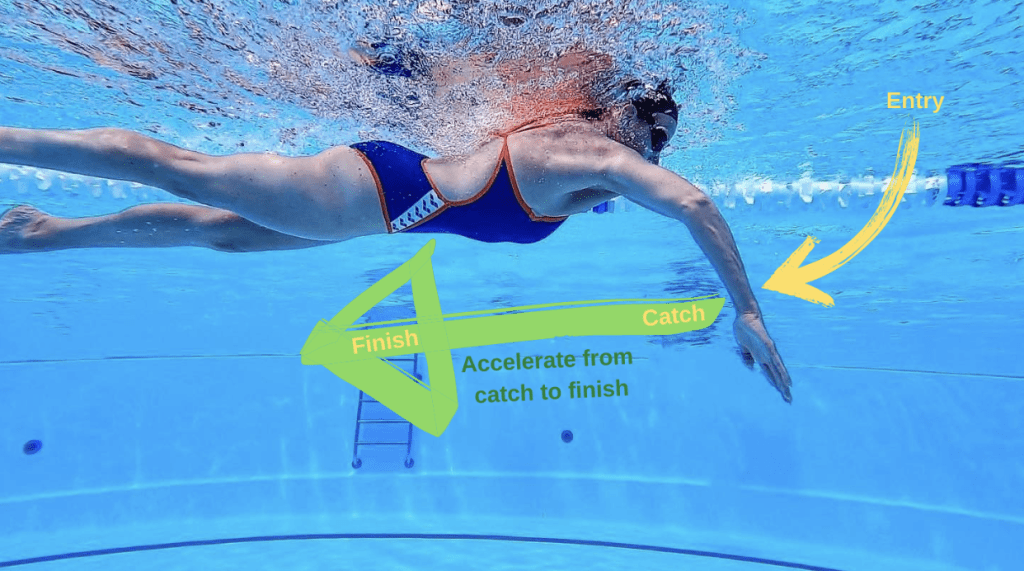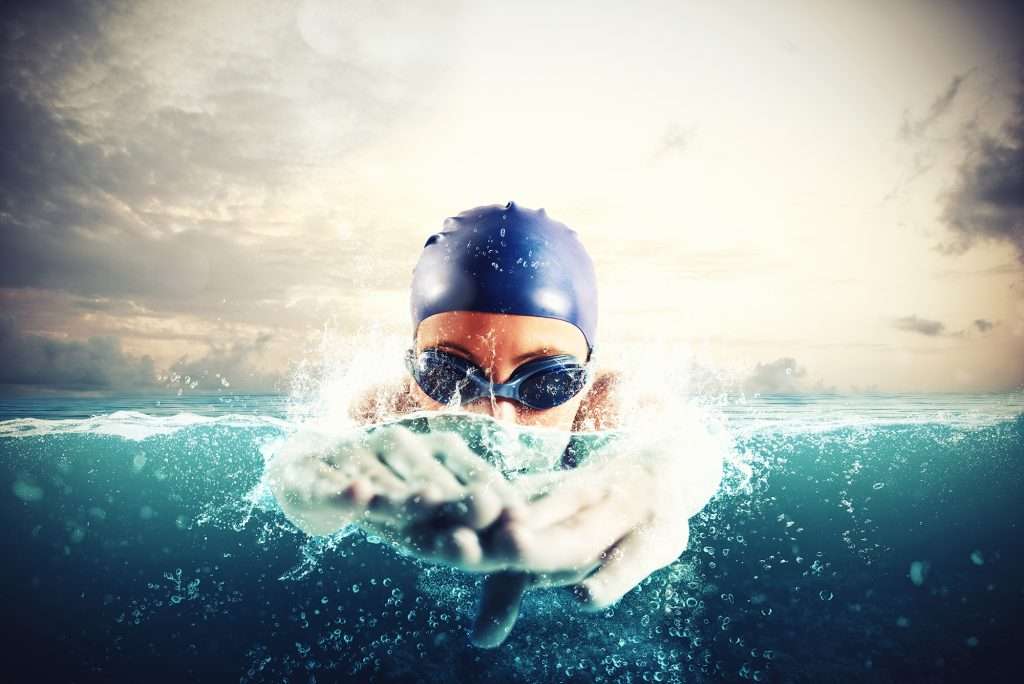Swimming is not only a great form of exercise, but it is also a fun and refreshing way to cool off during the hot summer months. Whether you are a competitive swimmer, a recreational swimmer, a triathlete, or just someone looking to improve their swimming skills, understanding the different types of swimming strokes (and maybe practicing on a specially-designed machines for swimmers and athletes) is essential.
Freestyle
The freestyle stroke (a.k.a. the front crawl) is the most popular and arguably the fastest sprint swimming stroke. But freestyle is also the chosen stroke for longer distance races, including triathlons and open-water events.
It is often the first stroke that beginners learn because it is relatively easy to master. To perform the freestyle stroke, swimmers kick their legs in a flutter kick motion while simultaneously using their arms to pull themselves through the water. The arm movements alternate, with one arm pulling back while the other recovers over the water. Proper body position is key to a successful freestyle stroke. To be efficient and reduce drag, swimmers need to keep their bodies long, taut, and horizontal in the water. The face and eyes look down at the bottom of the pool, and their bodies shift slightly from side to side by rotating about 20 to 35 degrees with each stroke. Proper breathing is also crucial in the freestyle stroke. Swimmers should inhale through their mouths while turning their heads slightly to the side to take new breaths and exhale through their noses when their faces are in the water.

Breaststroke
The breaststroke is another popular swimming stroke known for its distinctive frog-like kick and synchronized arm propulsion movements. To perform the breaststroke, swimmers start in a streamlined position with their arms extended in front of them. They then “catch water” and pull their arms towards their chest while simultaneously kicking their legs out and back in a circular motion. One key challenge of the breaststroke is maintaining good timing between the arm movements and the kick. Swimmers must also keep their bodies in a streamlined position for minimal drag. Proper breathing is also essential in breaststroke. Swimmers should take a breath every stroke cycle, lifting their heads out of the water to breathe. Sometimes during a triathlon or open-water swim, it’s useful to do some breaststroke to re-orient direction and catch your breath.

Backstroke
The backstroke is a competitive swimming stroke that is performed on the back. To perform the backstroke, swimmers kick their legs in a flutter kick motion while using their arms to pull themselves through the water. The arm movements are alternating, with one arm reaching back while the other recovers above the water. The key to a successful backstroke is maintaining proper body position. Swimmers should keep their bodies long, taut, straight, and horizontally in the water, with their face and eyes looking up at the sky. Proper arm and leg movements are also crucial in the backstroke. Swimmers should focus on a strong flutter kick and a smooth arm pull to maintain speed and efficiency.
Butterfly
The butterfly stroke is among the most challenging and physically demanding swimming strokes. It is known for its dolphin-like kick and simultaneous arm movements. To perform the butterfly stroke, swimmers kick their legs in a powerful dolphin kick motion while using their arms to pull themselves through the water, then recover the arms, swinging them forward in a circular motion.

One key challenge of the butterfly stroke is maintaining the proper timing between the arm movements and the kick. Swimmers must also keep their bodies in a streamlined position to minimize drag. Proper breathing is also crucial in the butterfly stroke. Butterfly swimmers take a breath with every arm pull, lifting their heads out of the water to breathe.
Swim Stronger, Better, Faster with Vasa Today
Understanding the different types of swimming strokes is essential for any swimmer looking to improve their skills and technique. Whether you are a beginner or a seasoned swimmer, mastering the freestyle, breaststroke, backstroke, and butterfly strokes with the help of our training resources can help you become a more efficient and confident swimmer.
If you want to enhance your swimming abilities and improve your overall performance in the water, consider investing in quality swimming training equipment from Vasa. Vasa’s products are designed to provide a lifetime of reliable, functional service, empowering people to get stronger, better, and faster in sports, fitness, and injury rehab. Remember, quality costs less, so why not take your swimming to the next level with Vasa? Contact us for more information on our products and how they can help you achieve your swimming goals.